Do you have a question about the Toyota Avalon 2003 and is the answer not in the manual?
Provides a general overview of the vehicle's instruments and controls.
Covers the operation and features related to keys and vehicle doors.
Explains the operation and features of the vehicle's power windows.
Details how to open and close the trunk lid, including its lock release lever.
Covers the procedure for opening and securing the vehicle's hood.
Explains the operation and setting of the vehicle's theft deterrent system.
Covers adjustments and usage of seats, seat belts, steering wheel, and mirrors.
Details seat adjustment, front seat precautions, and safety measures.
Explains seat belt usage, precautions, and proper restraint for occupants.
Describes the function and precautions for SRS driver and front passenger airbags.
Explains the operation and safety precautions for SRS side airbags.
Provides essential information and precautions for child restraint systems.
Covers operation of headlights, turn signals, wipers, and defogger systems.
Explains manual and automatic operation of headlights and turn signals.
Details how to operate the emergency flashers for hazard warnings.
Describes how to adjust the brightness of the instrument panel lights.
Explains the operation of front fog lights, often linked to headlights.
Covers the operation of the interior lights, including automatic entry and exit features.
Details the operation of windshield wipers and washer fluid squirting.
Covers the operation of rear window and outside mirror defoggers for visibility.
Explains the vehicle's gauges, meters, and service reminder indicators.
Details the fuel gauge operation and low fuel level warning light.
Explains the engine coolant temperature gauge and overheating warnings.
Describes the tachometer's function for engine speed and gear selection.
Explains the odometer and trip meters for tracking distance and fuel economy.
Lists and explains various service reminder indicators and warning buzzers.
Covers the operation of the ignition switch, automatic transmission, and parking brake.
Details the ignition switch positions and steering lock mechanism.
Explains the floor shift type automatic transmission operation and selector lever positions.
Details the function and operation of the traction control system.
Explains the function and warning conditions of the VSC warning light.
Covers the operation and types of the vehicle's parking brake.
Explains how to use the cruise control system for maintaining speed.
Provides information on the car audio system, its features, and operation.
Explains the manual and automatic air conditioning systems.
Covers various other interior equipment like clock, displays, and storage compartments.
Details the multi-information display and its components.
Explains how to set and adjust the digital clock.
Explains the outside temperature display and unit selection.
Details the cruise information display, showing speed and range.
Explains the compass display and how it indicates vehicle direction.
Provides guidance on the recommended break-in period for a new vehicle.
Details the recommended fuel type, octane rating, and tank capacity.
Warns about the dangers of engine exhaust and precautions to take.
Covers the vehicle's hydraulic brake system and brake booster function.
Describes the different types of tires and their performance characteristics.
Outlines the essential checks and adjustments to make before starting the engine.
Provides step-by-step instructions for starting both cold and hot engines.
Offers advice for safe driving in different weather and road conditions.
Details the procedures and precautions for towing a trailer with the vehicle.
Provides troubleshooting steps for when the vehicle fails to start.
Guides on how to handle a flat tire, including changing it safely.
Explains the correct procedures and precautions for towing the vehicle.
Provides instructions on what to do if you lose your vehicle keys.
Details common causes of corrosion and how to prevent it.
Provides instructions for washing and waxing the vehicle's exterior.
Offers guidance on cleaning the vehicle's interior surfaces and components.
Outlines the general requirements for maintaining the Toyota vehicle.
Lists routine checks and maintenance tasks to be performed regularly.
Highlights clues that may indicate the vehicle needs repair or adjustment.
Explains the vehicle's emission control system and inspection requirements.
Provides a diagram and identification of major components in the engine compartment.
Shows the locations of fuse boxes and spare fuses in the vehicle.
Lists crucial safety precautions for performing maintenance tasks.
Details the correct procedure for positioning the jack for safe vehicle lifting.
Lists necessary parts and tools required for do-it-yourself maintenance.
Explains how to check and add engine oil to maintain the correct level.
Details how to check and maintain the engine coolant level.
Covers the procedure for checking and maintaining the brake fluid level.
Explains the importance of checking tire pressure and how to do it correctly.
Guides on checking tire condition and when to replace tires.
Explains the process and benefits of rotating tires for even wear.
Provides instructions on installing snow tires and chains for winter driving.
Explains how to check the battery's condition and exterior.
Lists safety precautions to follow when recharging the vehicle's battery.
Details how to check and replace blown fuses in the vehicle's electrical system.
Provides instructions on adding washer fluid to the reservoir.
Guides on how to access and replace various exterior and interior light bulbs.
Lists the vehicle's external dimensions and weight specifications.
Provides engine specifications including type, bore, stroke, and displacement.
Details fuel type, octane rating, and fuel tank capacity recommendations.
Lists key service specifications for engine, brakes, fluids, and steering.
Provides tire size, pressure, and wheel size specifications.
Lists fuse types, amperage ratings, and their circuit functions.
Explains how U.S. owners can report vehicle safety defects to NHTSA and Toyota.
Describes the DOT quality grading system for tires (Treadwear, Traction, Temperature).
Emphasizes customer satisfaction and Toyota's commitment to quality.
Outlines the policy for providing transportation during overnight warranty repairs.
Guides owners on steps to resolve concerns and contact Toyota assistance.
Provides a summary of the vehicle's various warranty coverages and durations.
Explains the general terms, limitations, and owner rights under Toyota warranties.
Details the coverage for basic, powertrain, corrosion, and restraint systems.
Lists exclusions from warranty coverage, including maintenance and wear.
Describes the process for resolving warranty disputes through arbitration.
Outlines the federal warranty for vehicle emissions control systems.
Explains the emission warranty specific to California and adopting states.
Refers to the separate warranty provided by the tire manufacturer.
Covers owner responsibilities for vehicle operation and required maintenance.
Explains how to obtain warranty service domestically and internationally.
Provides a general overview of the vehicle's instruments and controls.
Covers the operation and features related to keys and vehicle doors.
Explains the operation and features of the vehicle's power windows.
Details how to open and close the trunk lid, including its lock release lever.
Covers the procedure for opening and securing the vehicle's hood.
Explains the operation and setting of the vehicle's theft deterrent system.
Covers adjustments and usage of seats, seat belts, steering wheel, and mirrors.
Details seat adjustment, front seat precautions, and safety measures.
Explains seat belt usage, precautions, and proper restraint for occupants.
Describes the function and precautions for SRS driver and front passenger airbags.
Explains the operation and safety precautions for SRS side airbags.
Provides essential information and precautions for child restraint systems.
Covers operation of headlights, turn signals, wipers, and defogger systems.
Explains manual and automatic operation of headlights and turn signals.
Details how to operate the emergency flashers for hazard warnings.
Describes how to adjust the brightness of the instrument panel lights.
Explains the operation of front fog lights, often linked to headlights.
Covers the operation of the interior lights, including automatic entry and exit features.
Details the operation of windshield wipers and washer fluid squirting.
Covers the operation of rear window and outside mirror defoggers for visibility.
Explains the vehicle's gauges, meters, and service reminder indicators.
Details the fuel gauge operation and low fuel level warning light.
Explains the engine coolant temperature gauge and overheating warnings.
Describes the tachometer's function for engine speed and gear selection.
Explains the odometer and trip meters for tracking distance and fuel economy.
Lists and explains various service reminder indicators and warning buzzers.
Covers the operation of the ignition switch, automatic transmission, and parking brake.
Details the ignition switch positions and steering lock mechanism.
Explains the floor shift type automatic transmission operation and selector lever positions.
Details the function and operation of the traction control system.
Explains the function and warning conditions of the VSC warning light.
Covers the operation and types of the vehicle's parking brake.
Explains how to use the cruise control system for maintaining speed.
Provides information on the car audio system, its features, and operation.
Explains the manual and automatic air conditioning systems.
Covers various other interior equipment like clock, displays, and storage compartments.
Details the multi-information display and its components.
Explains how to set and adjust the digital clock.
Explains the outside temperature display and unit selection.
Details the cruise information display, showing speed and range.
Explains the compass display and how it indicates vehicle direction.
Provides guidance on the recommended break-in period for a new vehicle.
Details the recommended fuel type, octane rating, and tank capacity.
Warns about the dangers of engine exhaust and precautions to take.
Covers the vehicle's hydraulic brake system and brake booster function.
Describes the different types of tires and their performance characteristics.
Outlines the essential checks and adjustments to make before starting the engine.
Provides step-by-step instructions for starting both cold and hot engines.
Offers advice for safe driving in different weather and road conditions.
Details the procedures and precautions for towing a trailer with the vehicle.
Provides troubleshooting steps for when the vehicle fails to start.
Guides on how to handle a flat tire, including changing it safely.
Explains the correct procedures and precautions for towing the vehicle.
Provides instructions on what to do if you lose your vehicle keys.
Details common causes of corrosion and how to prevent it.
Provides instructions for washing and waxing the vehicle's exterior.
Offers guidance on cleaning the vehicle's interior surfaces and components.
Outlines the general requirements for maintaining the Toyota vehicle.
Lists routine checks and maintenance tasks to be performed regularly.
Highlights clues that may indicate the vehicle needs repair or adjustment.
Explains the vehicle's emission control system and inspection requirements.
Provides a diagram and identification of major components in the engine compartment.
Shows the locations of fuse boxes and spare fuses in the vehicle.
Lists crucial safety precautions for performing maintenance tasks.
Details the correct procedure for positioning the jack for safe vehicle lifting.
Lists necessary parts and tools required for do-it-yourself maintenance.
Explains how to check and add engine oil to maintain the correct level.
Details how to check and maintain the engine coolant level.
Covers the procedure for checking and maintaining the brake fluid level.
Explains the importance of checking tire pressure and how to do it correctly.
Guides on checking tire condition and when to replace tires.
Explains the process and benefits of rotating tires for even wear.
Provides instructions on installing snow tires and chains for winter driving.
Explains how to check the battery's condition and exterior.
Lists safety precautions to follow when recharging the vehicle's battery.
Details how to check and replace blown fuses in the vehicle's electrical system.
Provides instructions on adding washer fluid to the reservoir.
Guides on how to access and replace various exterior and interior light bulbs.
Lists the vehicle's external dimensions and weight specifications.
Provides engine specifications including type, bore, stroke, and displacement.
Details fuel type, octane rating, and fuel tank capacity recommendations.
Lists key service specifications for engine, brakes, fluids, and steering.
Provides tire size, pressure, and wheel size specifications.
Lists fuse types, amperage ratings, and their circuit functions.
Explains how U.S. owners can report vehicle safety defects to NHTSA and Toyota.
Describes the DOT quality grading system for tires (Treadwear, Traction, Temperature).
Emphasizes customer satisfaction and Toyota's commitment to quality.
Outlines the policy for providing transportation during overnight warranty repairs.
Guides owners on steps to resolve concerns and contact Toyota assistance.
Provides a summary of the vehicle's various warranty coverages and durations.
Explains the general terms, limitations, and owner rights under Toyota warranties.
Details the coverage for basic, powertrain, corrosion, and restraint systems.
Lists exclusions from warranty coverage, including maintenance and wear.
Describes the process for resolving warranty disputes through arbitration.
Outlines the federal warranty for vehicle emissions control systems.
Explains the emission warranty specific to California and adopting states.
Refers to the separate warranty provided by the tire manufacturer.
Covers owner responsibilities for vehicle operation and required maintenance.
Explains how to obtain warranty service domestically and internationally.
| Brand | Toyota |
|---|---|
| Model | Avalon 2003 |
| Category | Automobile |
| Language | English |
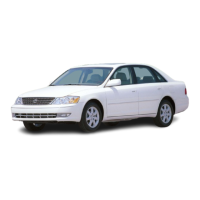




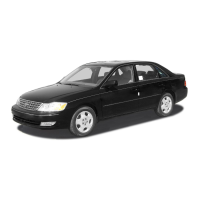


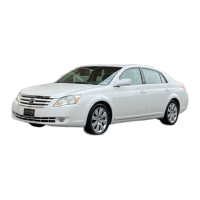

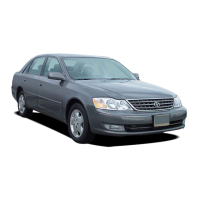
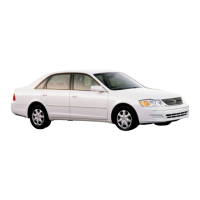
